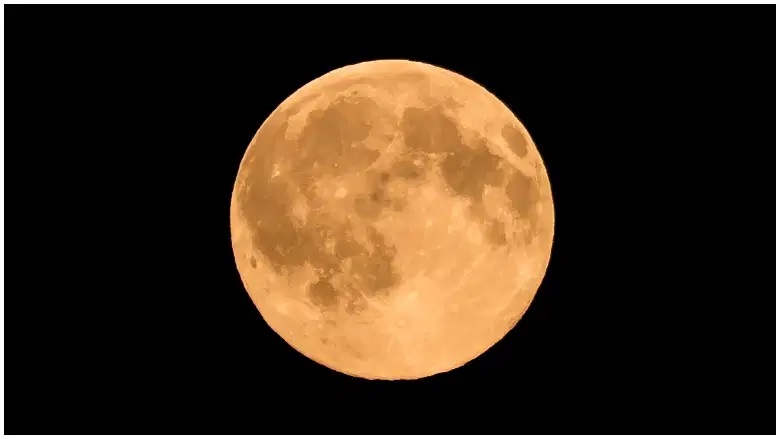
Even if there is an absence of the usual fireworks in your area, the sky is still planning to put on a show as another eclipse will take place. This time the appearance of the ‘Buck Moon‘ is expected to light up the sky.
Between the late hours of July 4 and the wee hours of July 5, the Buck moon will illuminate the night sky. Similar to the strawberry moon which took place on June 5th, the Buck moon is created by a penumbral lunar eclipse.
The Buck Moon is also referred to as the Thunder Moon, Hay Moon, Rose Moon, Guru Moon and Dharma Day, according to the National Aeronautics and Space Administration.
The ‘Buck Moon’ Is Created By A Penumbral Eclipse
So – if the July #FullMoon is known as the “#BuckMoon“… is what we’re seeing tonight the “fifty cent” #moon? Is it worth more with bonus #SaharanDust? #skywatching #astrophotography #BadJokes #ncwx pic.twitter.com/3Mp3wUGHp6
— Picture The South (@PictureTheSouth) June 30, 2020
The Buck moon is the result of a penumbral eclipse, which takes place when the moon is close to being the exact opposite of the sun as the sun is passing through the shadow of the earth, according to NASA.
According to Forbes, “a slither of the full Moon—about a third of it, in fact—will appear to be a little dim for a few hours as it passes through Earth’s outer, fuzzy shadow in space.”
Unlike the total lunar eclipse — during which, Earth’s shadow completely covers the moon — and the partial lunar eclipse — during which, the Earth’s shadow partially covers the surface of the moon — the penumbral lunar eclipse is much less noticeable, Thrillist reported.
Eclipse expert Fred Espanek told USA Today that roughly a third (35%) of all eclipses are penumbral eclipses, which can be difficult to detect even with a telescope.
Unfortunately for many, these types of eclipses are subtle affairs and they won’t be very noticeable to the naked eye; however, there are some instruments that will make the visual dimming of the moon, as well as its reduction in solar power, more visible, according to NASA.
Who Named It the Buck Moon?
Buck Moon. Goodnight.#goodnight #moon #buckmoon #night #nature #awe #fullmoon pic.twitter.com/Sis1Hs4Fej
— Beth Frates, MD (@BethFratesMD) July 18, 2019
According to NASA, the moon was named by the Algonquin tribes who lived in the northwestern part of the current U.S. and seeing the moon signaled the coming deer season, or as NASA put it, “Early summer is normally when the new antlers of buck deer push out of their foreheads in coatings of velvety fur.” It was also referred to as the Thunder Moon due to early summer’s frequent thunderstorms.
The moon also has meaning across many other cultures. Hindus call the moon the Guru Purnima (“Guru Full moon”), during which time, practitioners are to clear their minds and honor their guru or spiritual master. Buddhists know it as Asalha Puha(“Darma Day”).
The moon also takes place during the Chinese calendar’s fifth month and the Tammuz of the Hebrew Calendar. On the Islamic calendar, the full moon takes place near the middle of Dhu al-Qidah. That time symbolizes only one of four sacred months during which war is banned.
Here’s How You Can See the ‘Buck Moon’
Anyone else catch the #buckmoon last night? 😊 pic.twitter.com/6jr7fgSHyd
— Suzanne Cordeiro (@SuzanneCordeiro) July 28, 2018
According to AccuWeather, the skies will be clear in Texas and the midwest, although New England, the central U.S. and areas in the Deep South may experience clouds.
According to Forbes, 4:29 UTC (which is 12:29 a.m. EDT on July 5 and 9:29 p.m. PDT on July 4).
Here is a list of the quality of the view by geography, as described Express:
Best: North and South America, and some parts of northwest Africa.
Decent: North, Central and Southern Africa
Glimpse: Western Europe
None: Asia, Australia and every non-Western part of Europe
Earth Sky reported that not only will the penumbral eclipse take place, but also the appearance of the planets Jupiter and the ringed planet of Saturn: “You need a telescope to see Saturn’s rings. But you’ll enjoy seeing Jupiter and Saturn close together,” the site promised.
According to NASA, the moon will be lower in the sky since July is closer to the summer solstice.
News Source:
Photo Credit: (Flickr/Matthew Hartley)
